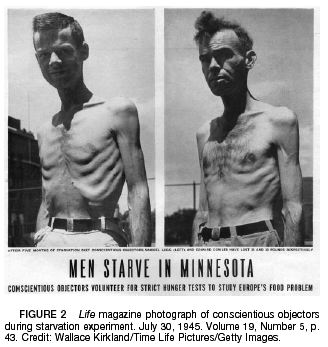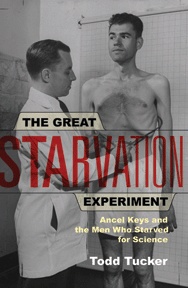 Passage from Escape From the Planet of the Apes.
Passage from Escape From the Planet of the Apes.
Zira: I should have said that chimpanzees had no part in the destruction of Earth. Only the gorillas and the orangutans.
E.2.: What’s the difference? You’re all monkeys.
Cornelius: Please do not use the word ‘monkey.’ We find it offensive. As an archeologist I had access to history scrolls kept secret that the weapon which destroyed Earth was Man’s invention. I know that one reason for Man’s original downfall was your peculiar habit of murdering one another. Man destroys Man. Apes do not destroy Apes.
Hasslein: Cornelius, this is not an inter-racial hassle but a search for facts. We admit the possibility of Man’s decline and fall. But what all of us here would like to know is how the Apes rose.
Cornelius: It began, in our prehistory, with the plague that fell upon the dogs.
Zira: And cats.
Cornelius: Hundreds and thousands had to be destroyed to prevent the spread of infection.
Zira: There were dog bonfires.
Cornelius: By the time the plague was contained, Man was without pets; and for Man, this was intolerable. He might kill his brother, but he could not kill his dog.
________
In September 1941, Hitler’s army surrounded Leningrad under the order to starve the city into submission. The siege lasted 872 days, resulting in over 1,000,000 human deaths due to starvation, and providing ample evidence of ghoulish cannibalism. This summarizes the first two pages of a book titled, The Great Starvation Experiment, written by Todd Tucker.
 Tucker’s book does not pertain to man killing man in Europe; instead, the reader learns of a stateside experiment conducted by Dr. Ancel Keys at the University of Minnesota during World War II. According to the author, “the U.S. military wanted to design a high-energy, portable, and nutritious meal for paratroopers”, resulting in what is now commonly referred to as “K rations.”
Tucker’s book does not pertain to man killing man in Europe; instead, the reader learns of a stateside experiment conducted by Dr. Ancel Keys at the University of Minnesota during World War II. According to the author, “the U.S. military wanted to design a high-energy, portable, and nutritious meal for paratroopers”, resulting in what is now commonly referred to as “K rations.”
Dr. Keys secured funding from the War Department because he successfully argued a famished Europe would be ripe and fertile ground for ideologues anathema to democracy. Dr. Keys’ experiment led to the creation of a laboratory beneath the playing surface of Memorial Stadium, home of the Golden Gopher football team. Thus, Dr. Keys had funding and space, but needed human guinea pigs to study the effects of severe cold and heat, thirst, the lack of calories and certain vitamins, among other variables, on a wide array of information that can be politely called “human affairs.”
The army provided Dr. Keys with 36 healthy men who, in lieu of joining the war effort, chose to be listed as conscientious objectors* within the Selective Service System. The starvation experiment for these men lasted one year. The initial phase of three months determined the necessary diet and number of calories to retain a normal weight. The second phase, which covered six months, cut each man’s diet in half. Dr. Keys opined the third phase was the most critical as it would identify the process through which man could recover most efficiently.
During the second phase, the highly popular magazine at the time, Life, had a four-page pictorial in July 1945 that was titled, “Men Starve in Minnesota.” Tucker writes that one scanning the pictures “might have mistaken emaciated volunteers for victims of the Nazi concentration camps, with their characteristic protruding ribs and empty stares. One man’s grotesquely swollen leg… was an apparent side effect of hunger.”
Besides CO’s, who were these men? Well, they came from 18 states. All but one identified with a religious denomination. The historic peace churches, i.e., Brethren, Quaker, and Mennonite, accounted for 15, which is clearly a disproportionately higher percent as compared to their overall U.S. church membership. Baptists, Methodists, Episcopalians participated. The lone Jew in the experiment, Max Kampelman, went on to become one of Ronald Reagan’s chief nuclear arms negotiators.
One man from my denomination, the “EMC”, aka, Evangelical Mission Covenant church, now known as the Evangelical Covenant Church of America participated. His name was Philip Liljengren. Mr. Liljengren went on to become an instructor at North Park College, my alma mater.
“My Dad would have been very happy that the experiment is seen as relevant now,” said Liljengren’s son. “Dad always felt that he and the others were generating valuable information, at the time and for the remainder of his life. Remember, this experiment took place only a few years after the Great Depression, when the possibility of widespread starvation, even in the US, seemed a possibility. He was definitely scarred by the incident, but always felt that it had been a worthwhile sacrifice.”
Peace be to Phil’s memory.
*Other War Department experiments on CO’s included the wearing of lice-infested underwear in order to contract typhus, gargling the saliva of someone else who had pneumonia, and strapping boxes filled with mosquitos to the stomach in order to contract malaria.


